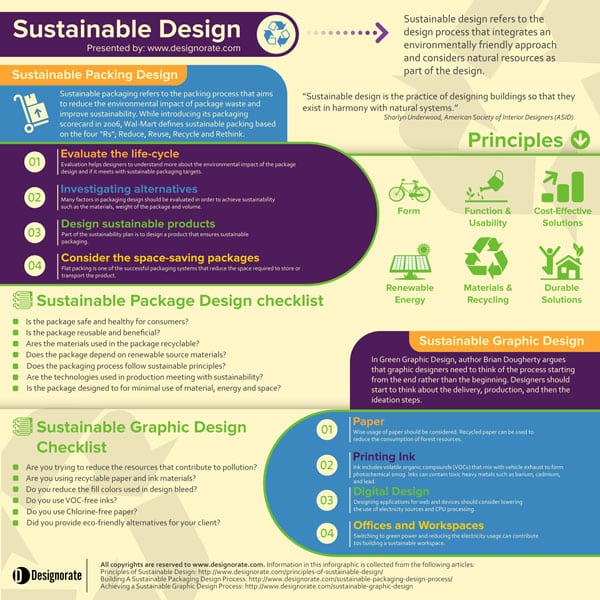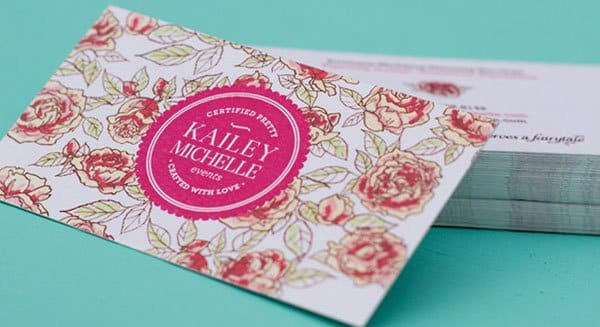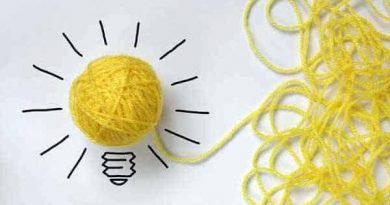Achieving a Sustainable Graphic Design Process
Graphic designers should no longer be seen from the old narrow perspective of the creative process. As a part of a holistic design role in the production process, graphic designers contribute to project development beginning with the ideation process and ending with the delivery stage. Along with the existing and future challenges that face our environment, companies such as IKEA, Apple, Lego, and Starbucks implement sustainable design guidelines in order to lower the consumption of earth resources and focus on recycling existing products. Sustainable design refers to the design process that integrates an environmentally friendly approach and considers natural resources as part of the design.
While different design disciplines adopt sustainable development methodologies and tools, the graphic design industry still lacks this paradigm. Most of the graphic design schools do not provide sustainable education comparing with other fields such as product design, architectural design…etc.
As the graphic design industry contributes as a key visual communicator and marketing tool for different industries inside and outside the creative sector, its role to achieve sustainability becomes even more important. The sustainable practice for graphic designers include a wide range of considerations including both traditional and digital graphic design domains. These considerations include materials, ink, paper, and the design itself.
Note: Download high resolution version of our sustainable design infographic by clicking here.

How does one Apply Sustainable Graphic Design?
In Green Graphic Design, author Brian Dougherty argues that graphic designers need to think of the process starting from the end rather than the beginning. Designers should start to think about the delivery, production, and then the ideation steps. Then, an evaluation process should be applied to the whole project including internal development factors such as printing techniques and external factors such as shipping and carbon emissions. An example of applying sustainability on the overall process is the IKEA model, which is covered in two previous article; Guide to IKEA’s Sustainable Design Strategy Part 1 and Part 2. Considering the wise or limited usage of the following factors can contribute to achieve a sustainable graphic design process:
Paper
Although the move to digital media such as emails, ebooks, and digital advertisement, printed materials are still an essential part of the graphic design process. The increasing usage of paper has a negative environmental impact on trees as they are considered a source for paper to be used in printing. Additionally, the paper industry requires consumption of fuel, electricity, and steel used by the different machines.
Wise usage of paper should be considered. Recycled paper can be used to reduce the consumption of forest resources. Implementing industrial technologies that reduce the fuel and electricity consumption in the paper production process contributes to reducing the environmental impact of this part of the process.

Printing Ink
The ink used in printing contains pollutants and some printing inks include volatile organic compounds (VOCs), which contributes to global warming and climate change. Additionally, the VOCs emission mixes with vehicle exhaust to form photochemical smog. Inks can contain toxic heavy metals such as barium, cadmium, and lead. In order to reduce the pollution produced by printing inks, ink should be used wisely to reduce waste and experienced ink management should be applied.
Other Printing Factors
In addition to the main paper and ink factors, side factors affect the printing process such as the emissions to air and water, waste of the printing process, excessive usages of electricity and power sources. These factors should be considered in order to reduce the pollution and waste produced during the printing process.
Digital Design
While the printing industry contribute to pollution through the usage of an unreasonable amount of ink and paper, digital design contributes to climate change through the usage of electricity. Designing applications for web devices should lower the use of electricity sources. For example, Apple stopped the support of Adobe Flash for animation on its mobile devices in order to avoid the massive consumption of battery and CPU calculations produced by the Adobe Flash Player. Technology used in digital design should be replaced with other forms that have less power consumption.
Additionally, the new releases of applications should be designed to run on the older devices to avoid the waste produced by the throw-away rate of these antiquated devices and replacement with a new device even if the recycled process is expected to be improve electronic waste.

Offices and Workspaces
Most graphic designers work in offices or workplaces where air conditioners are used. Switching to green power and reducing the electricity usage can contribute tos building a sustainable workspace.
In addition to the above factors that should be used wisely in graphic design projects, a number of points should be considered by graphic designers toward the process itself as well as to the client. These considerations include the following:
- More is less – Try to reduce the usage of materials that contribute to pollution and climate change. For example, use less paper when possible or replace current printing ink with less pollutant replacements.
- Use recyclable materials – Depend on recyclable materials rather than then on one time used resources that end up in landfill.
- Reduce the bleed when possible – expanding the design to lessen the bleed increase which leads to the ink waste. Try to reduce this waste by keeping the bleed white when possible.
- Use VOC-free inks – the pollution produced by the VOCs can be diminished significantly by using VOC-free alternatives.
- Use Chlorine-free paper – use chlorine-free paper rather than the paper materials that have been bleached using Chlorine. The materials are known as Totally Chlorine Free (TCF) or Process Chlorine Free (PCF).
- Provide eco-friendly options to clients – graphic designers can provide an eco-friendly option for the client, encourage them to move to a sustainable approach and mention this approach in their products to increase their brand value.
Conclusion
Graphic designers should adapt sustainable design guidelines in their projects in order to reduce the pollution and waste produced during both the printing and digital design process. Designers are also encouraged to reduce the pollutants when using materials such as papers, ink, and printing machines. In addition, the reduction of electricity usage and switching to green power are encouraged for both print and digital design industry.







I am currently working on the need to redefine sustainable graphic design.
So this site has been really helpful, however, in the domain of published article there
are few discussions going on. I would be happy if we could contribute more to the academic
discourse on sustainable graphic graphic to drive the sustainability agenda. Moreover, the concept of sustainability is not just about the environment. It also covers the economy and the social aspects without which there is no sustainability. Graphic designers should therefore strive to include these two aspects too.
Thanks Ginn, I totally agree, there has been a while since my last article about sustainable design. keep tuned for more resources to come. Thanks! Rafiq